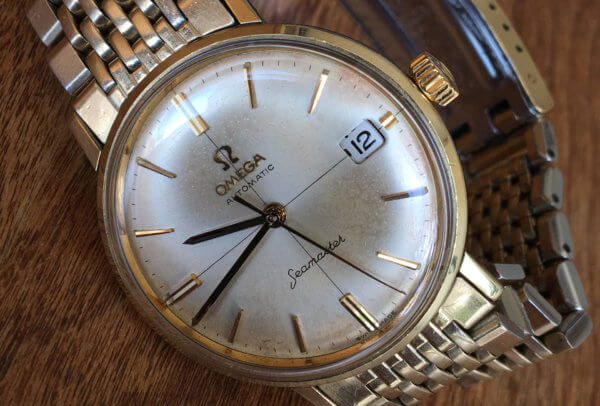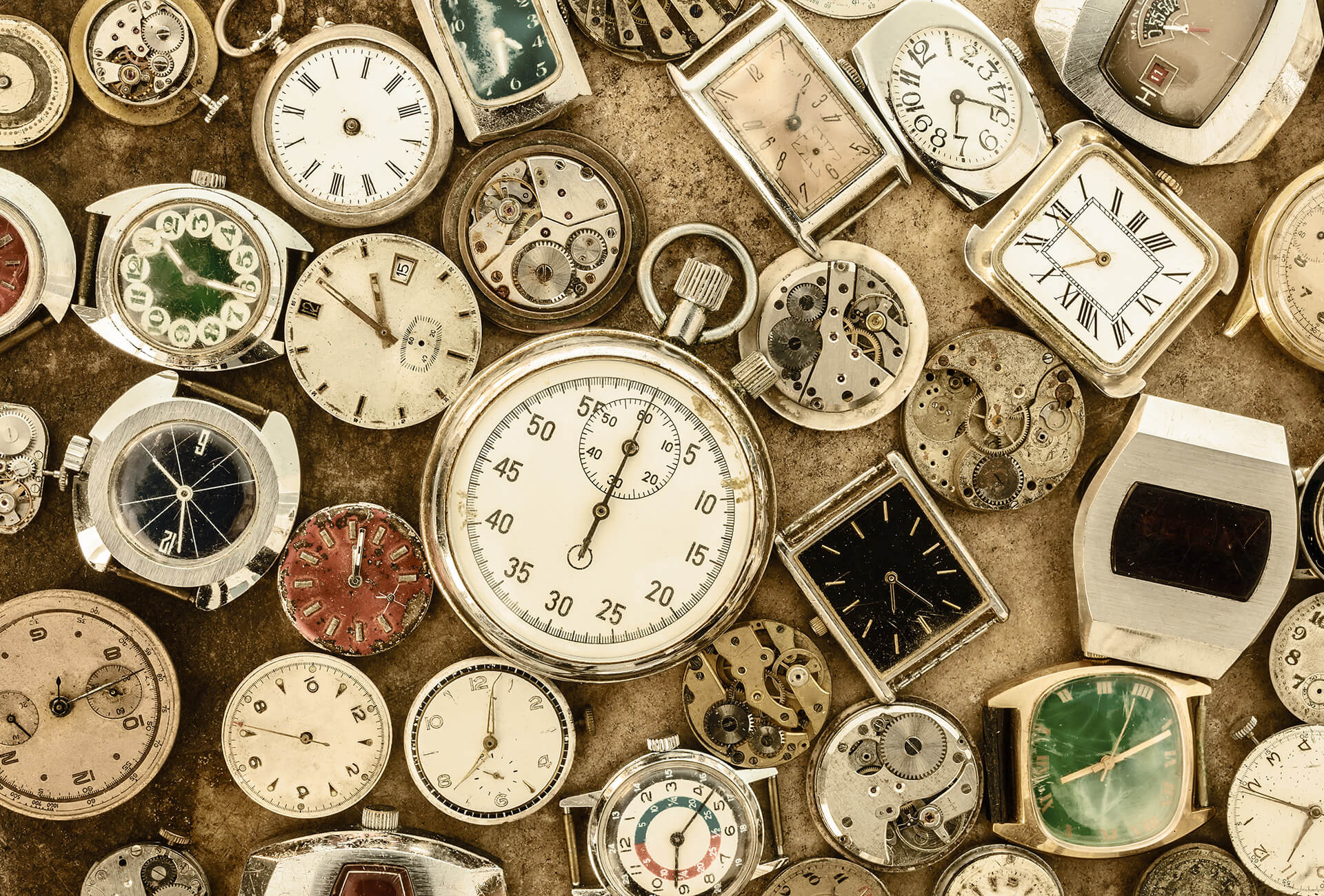Recent grumblings on social media expressed concerns from certain disgruntled “watch family” members about in-house vs outsourced movements and components, brand transparency, even the overuse of star ambassadors to up the prices on first-hand purchases. Seasoned connoisseurs, it seems, are little affected by these minor tremors, steering their course based upon years of experience that have (almost) always included both first- and second-hand buys, while more recent collectors tend to look towards out-there pieces from independents, with an occasional exception. Five collectors from around the globe open up to tell us how their collections started and how they evolve. Their stories are accompanied by their photos of the “if there could only be one” watch.
Canada - Toronto-based architect Mark Fleminger
Toronto-based architect Mark Fleminger wore his late father’s Nivada Skymaster to school, and at the age of 17 was made custodian of his “grandfather’s beautiful 1961 Omega Seamaster De Ville”. A collector now for 30 years, it was the Omega that “led me on a lifelong love and connection to the brand”. His collection today comprises “about 60 watches, mostly Omegas and IWCs, with some vintage Nivadas, Longines, and Tissots”. He looks first for beauty, often with complications such as a date “perhaps because my very first watch, a gift from my parents, was without one”, or a chronograph “that I use all the time, for cooking, working out at the gym. I believe a watch should be worn, and used. I wear a different one every day”.

For this head of the RedBar crew in Toronto, the necessity of an in-house movement “is nonsense, a ridiculous concept. Which brand today makes everything in-house?” he asks. “Look at Lemania that made the movement for the Omega Speedmaster that went to the moon. It is now part of Breguet, making movements for Breguet. So the Speedmaster does not technically have an “in-house” movement and does not suffer because of that! This whole crazy concept goes back to the development of the Asian market about 10 years ago. Suddenly, every brand had to have an in-house movement and a tourbillon. The end result was that a normal person could no longer afford the new watches! And for those who could, the repair costs doubled when the movement was in-house.”
Owner of 20 Omega watches, it was important for him to know that any of them could be repaired locally – that parts were available. “But I’m a bit disillusioned now. For 60 years, Omega was the ‘working man’s good watch’. But during the last five years, they’ve withdrawn all parts made before 1960. Now the watches have to go to Bienne, with repair costs that are equal to or more than the value of the watch, and that’s a problem.” Omega remains among his top two preferred brands, nonetheless – “I am a committed Omega vintage buyer. I own five rare vintage Constellations” – and his favourite watch today, for “sentimental reasons”, is still the Omega that belonged to his grandfather.
History and heritage
Another brand that’s high on Mark’s list is IWC. “I always aspired to IWC, and bought a Pilot Chronograph as soon as I could afford it. I have nine IWCs now, including some limited editions such as the Vintage Collection Ingenieur Laureus Sport for Good Foundation, the IWC Tribute to Mark XI, and the Aquatimer Cousteau – Tribute to Calypso. My Ingenieurs and Portugiesers have in-house movements, and are special because of that. In-house movements do give added value and are important to a brand’s history and heritage. Others are equipped with Valjoux (ETA) or Sellita movements, which is good for me because it means the watches don’t have to go back to Schaffhausen for repairs. I love my IWC Tribute to Mark XI, and it has a Sellita movement.”
History and heritage are important for this collector, “along with the personal touch. IWC has an incredible history, started by an American to manufacture Swiss watches to import to the USA. I like its history and family connections as much as the fantastic Pilot Watches, Portugiesers, Aquatimers and the amazing Ingenieurs that defined fine watchmaking in the 50s. They were rugged, reliable, water-resistant and could resist high levels of magnetism. It was very unusual for a watch to display all these features together. And IWC takes such good care of collectors, in terms of customer service, recognition of collectors at SIHH, watchmaking courses and Collectors’ meetings. I’m now absolutely committed. IWC holds it value and… which other company can have Kurt Klaus greet you at SIHH!”
As a loyal collector, Mark has only ever sold four of his watches. And loves to wind them. “I don’t like winding machines. Winding a watch is a personal enjoyment; I wind my manual-winding Speedmaster every Speedy Tuesday, and wear one of my IWC Pilot watches every Flieger Friday.”
Instagram : constellation_m










